PSPICE Hybrid Modeling and Simulation of Capacitive Micro-Gyroscopes
Abstract
:1. Introduction
- (1)
- A detailed model of MEMS gyroscopes is developed. This model considers mechanical thermal noise equivalent disturbance as well as the capacitance model without approximation. The model also considers the effect of temperature on the displacements of both modes.
- (2)
- All output ports of the model are capacitive interfaces, which can be directly connected to conditioning circuits. Therefore, a closed-loop simulation of the model and interface circuits is achieved. A calibration scheme for temperature is developed based on a different Zero Rate Output (ZRO) at different temperatures.
- (3)
- Based on the simulation results, optimization designs of interface circuits are achieved, including the value of the demodulation signal phase and the circuit gain k in the closed-loop detection circuit.
2. Methods
2.1. PSPICE Models of Different Modules in MEMS Gyroscopes
2.1.1. The Sensitive Structure
2.1.2. The Coriolis Force and Elastic Coupling Force Model
2.1.3. The Mechanical Thermal Noise Equivalent Disturbance
2.1.4. The Mechanical Model of MEMS Gyroscopes
2.1.5. The Temperature Models of Gyroscope Parameters
2.1.6. The Differential Capacitance of MEMS Gyroscopes
2.2. Establishment of Capacitive MEMS Gyroscopes PSPICE Device Model
2.3. The PSPICE Closed-Loop Simulation of MEMS Gyroscopes
3. Results
3.1. The Simulation Results of the Capacitive MEMS Gyroscopes PSPICE Device Model
3.2. The Simulation Results of the Closed-Loop Control of MEMS Gyroscopes
3.2.1. The Closed-Loop Simulation Results of Drive Mode
3.2.2. The Closed-Loop Simulation Results of Sense Mode
3.2.3. The Optimization Designs of the Closed-Loop Detection Circuit
4. Discussion
- (1)
- Some details of MEMS gyroscopes are considered in this model, including the capacitance model without approximation, mechanical thermal noise, and the effect of temperature.
- (2)
- The closed-loop simulation of MEMS gyroscopes is achieved based on the differential capacitance interfaces of this model and subsequent interface circuits.
Acknowledgments
Author Contributions
Conflicts of Interest
References
- Patel, C.; Mccluskey, P. Modeling and simulation of the MEMS vibratory gyroscope. In Proceedings of the IEEE 13th InterSociety Conference on Thermal and Thermomechanical Phenomena in Electronic Systems, San Diego, CA, USA, 30 May–1 June 2012; pp. 928–933. [Google Scholar]
- Yesil, F.; Alper, S.E.; Akin, T. An automatic mode matching system for a high Q-factor MEMS gyroscope using a decoupled perturbation signal. In Proceedings of the IEEE 18th International Conference on Solid-State Sensors, Actuators and Microsystems (TRANSDUCERS), Anchorage, AK, USA, 21–25 June 2015; pp. 1148–1151. [Google Scholar]
- Antonello, R.; Oboe, R.; Prandi, L.; Caminada, C.; Biganzoli, F. Open loop compensation of the quadrature error in MEMS vibrating gyroscopes. In Proceedings of the IEEE 35th Annual Conference on Industrial Electronics, Porto, Portugal, 3–5 November 2009; pp. 4034–4039. [Google Scholar]
- Batur, C.; Sreeramreddy, T.; Khasawneh, Q. Sliding mode control of a simulated MEMS gyroscope. In Proceedings of the IEEE American Control Conference, Portland, OR, USA, 8–10 June 2005; pp. 99–108. [Google Scholar]
- Rashed, R.; Momeni, H. System modeling of MEMS Gyroscopes. In Proceedings of the IEEE Mediterranean Conference on Control & Automation, Athens, Greece, 27–29 June 2007; pp. 1–6. [Google Scholar]
- Kwon, H.J.; Seok, S.; Lim, G. System Modeling of a MEMS Vibratory Gyroscope and Integration to Circuit Simulation. Sensors 2017, 11, 2663. [Google Scholar] [CrossRef] [PubMed]
- Burstein, A.; Kaiser, W.J. Microelectromechanical gyroscope: Analysis and simulation using SPICE electronic simulator. Proc. SPIE 1995, 2642, 225–232. [Google Scholar]
- Fang, Y.; Wang, S.; Fei, J. Adaptive T-S fuzzy sliding mode control of MEMS gyroscope. In Proceedings of the IEEE International Conference on Fuzzy Systems, Beijing, China, 6–11 July 2014; pp. 359–364. [Google Scholar]
- Alper, S.E.; Akin, T. A Single-Crystal Silicon Symmetrical and Decoupled MEMS Gyroscope on an Insulating Substrate. J. Microelectromech. Syst. 2005, 14, 707–717. [Google Scholar] [CrossRef]
- Ning, P.; Wen, X.; Li, Y.; Ge, Q. A finite differential method based compact thermal model in PSPICE. In Proceedings of the IEEE Applied Power Electronics Conference and Exposition, Tampa, FL, USA, 26–30 March 2017; pp. 1015–1019. [Google Scholar]
- Kan, L.; Chao, L. Capacitive Micro-accelerometer PSPICE Simulation Model Research. In Proceedings of the IEEE International Symposium on Information Science and Engineering, Shanghai, China, 24–26 December 2010; pp. 599–602. [Google Scholar]
- Tatar, E.; Alper, S.E.; Akin, T. Quadrature-Error Compensation and Corresponding Effects on the Performance of Fully Decoupled MEMS Gyroscopes. J. Microelectromech. Syst. 2012, 21, 656–667. [Google Scholar] [CrossRef]
- Cao, H.; Li, H.; Wang, S.; Yang, B.; Huang, L. Structure model and system simulation of MEMS gyroscope. J. Chin. Inert. Technol. 2013, 21, 524–529. [Google Scholar]
- Bao, M.-H. Micro Mechanical Transducers: Pressure Sensors, Accelerometers and Gyroscopes; Elsevier: Amsterdam, The Netherlands, 2000; pp. 365–369. ISBN 978-0444505583. [Google Scholar]
- Prikhodko, I.P.; Trusov, A.A.; Shkel, A.M. Achieving long-term bias stability in high-Q inertial MEMS by temperature self-sensing with a 0.5 millicelcius precision. In Proceedings of the Solid-State Sensors, Actuators, Microsystems Workshop, Hilton Head Island, SC, USA, 3–7 June 2012; pp. 287–290. [Google Scholar]
- Chen, S.; Yang, B.; Wang, S. Research on Thermal Characteristic of Z-Input Silicon Micromachined gyroscope. Chin. J. Electron. Devices 2008, 31, 1753–1756. [Google Scholar]
- Sharma, M.; Sarraf, E.H.; Baskaran, R.; Cretu, E. Parametric resonance: Amplification and damping in MEMS gyroscopes. Sens. Actuators A Phys. 2012, 177, 79–86. [Google Scholar] [CrossRef]
- Acar, C.; Shkel, A.M. An approach for increasing drive-mode bandwidth of MEMS vibratory gyroscopes. J. Microelectromech. Syst. 2005, 14, 520–528. [Google Scholar] [CrossRef]
- Sawaby, A.; Ahmed, A.S.; Abozeid, M.O.; Ali, H.; Aboudina, M.M. Mixed-mode self-calibrated amplitude control scheme for MEMS vibratory gyroscopes. In Proceedings of the IEEE 14th International New Circuits and System Conference, Vancouver, BC, Canada, 26–29 June 2016; pp. 1–4. [Google Scholar]
- Cui, J.; Guo, Z.; Zhao, Q.; Yang, Z.; Hao, Y.; Yan, G. Force rebalance controller synthesis for a micromachined vibratory gyroscope based on sensitivity margin specifications. J. Microelectromech. Syst. 2011, 20, 1382–1394. [Google Scholar] [CrossRef]
- Prikhodko, I.P.; Trusov, A.A.; Shkel, A.M. Compensation of drifts in high-Q MEMS gyroscopes using temperature self-sensing. Sens. Actuators A Phys. 2013, 201, 517–524. [Google Scholar] [CrossRef]
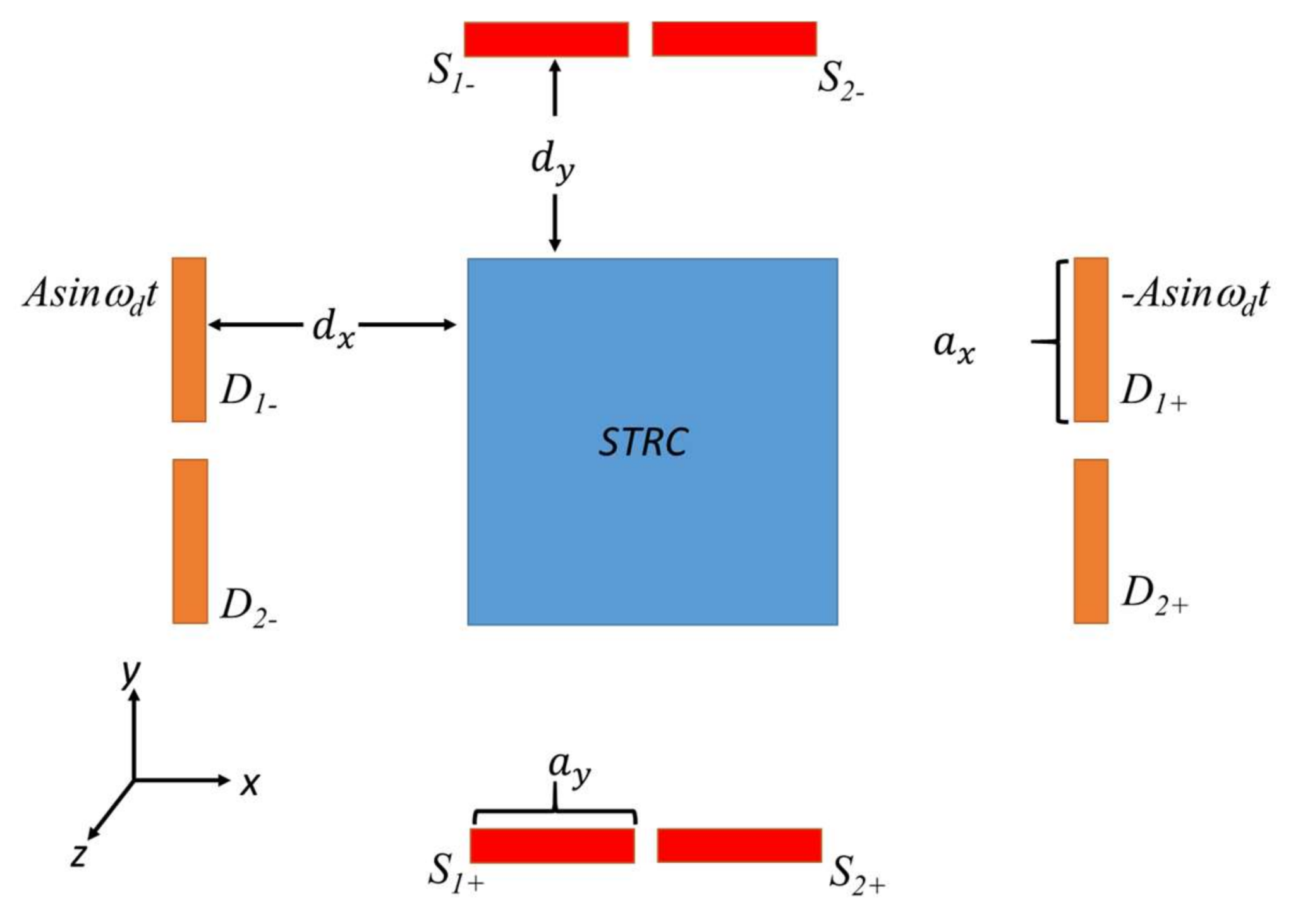
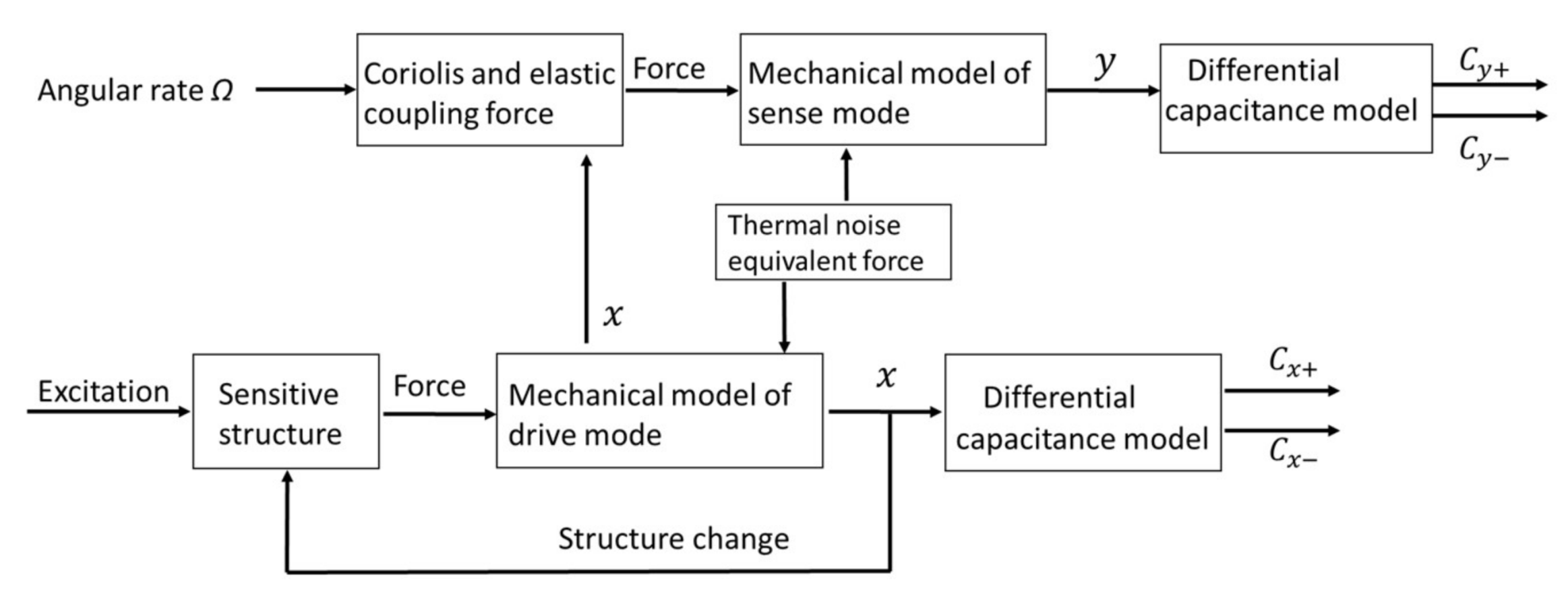
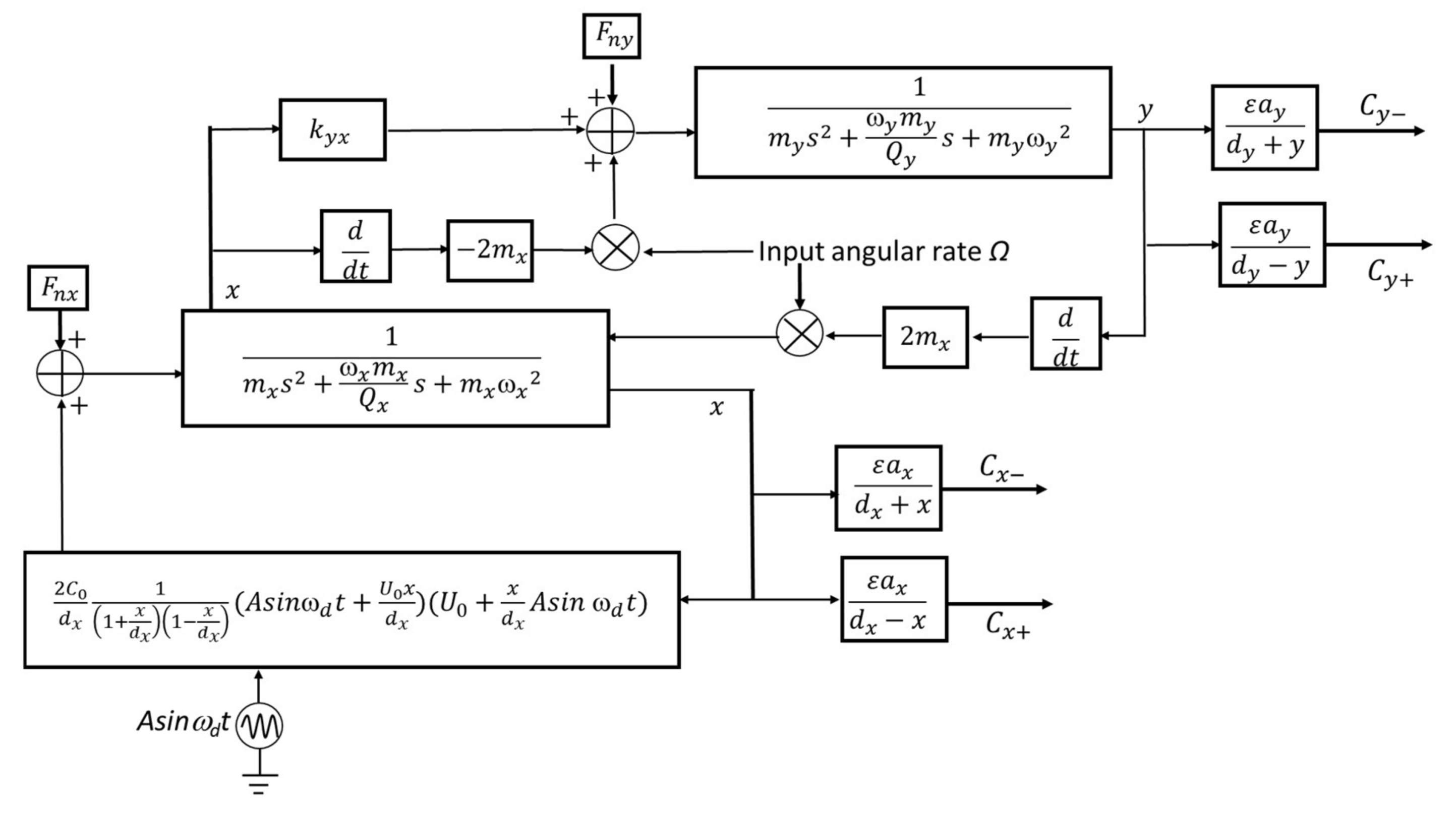
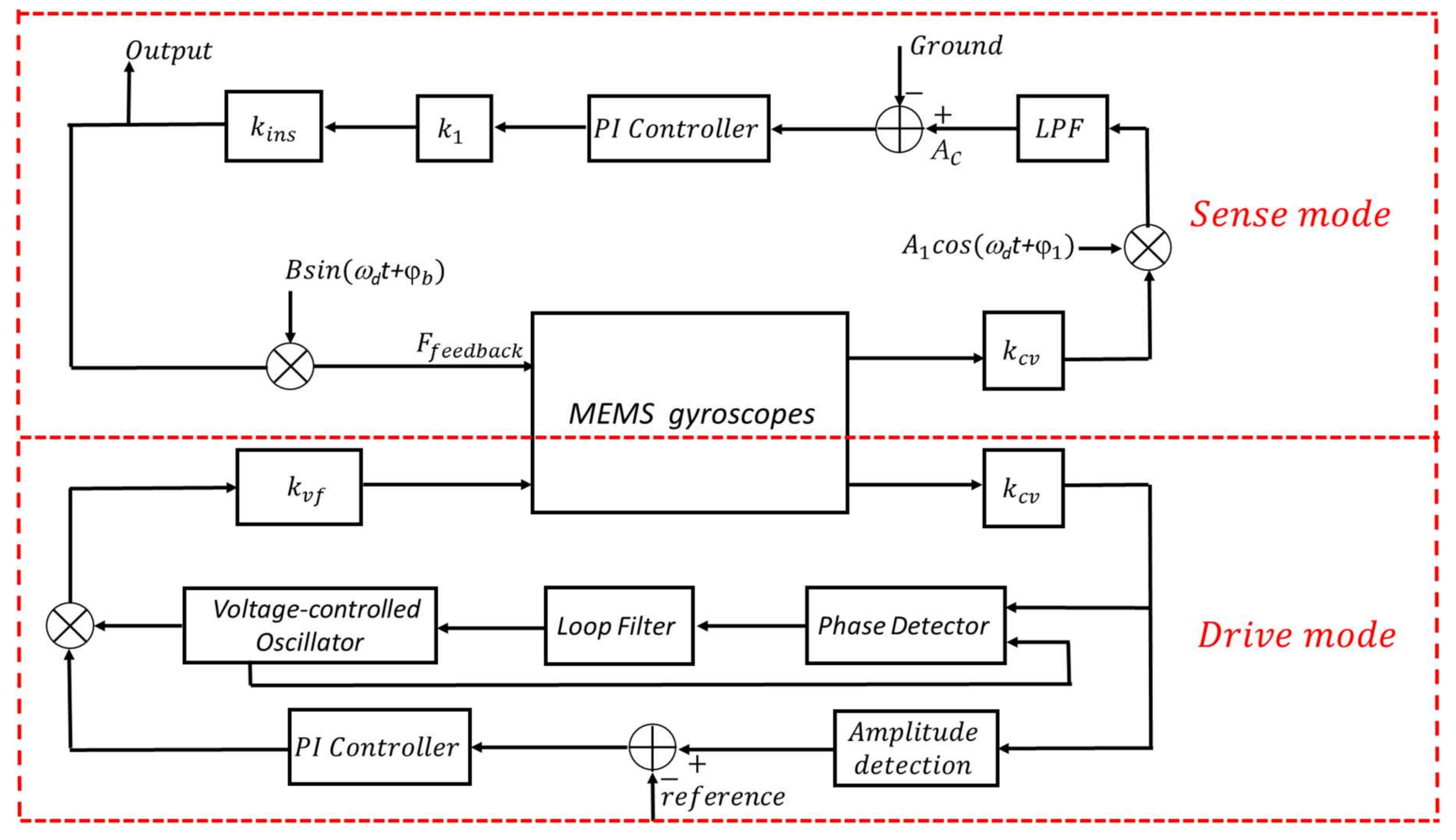
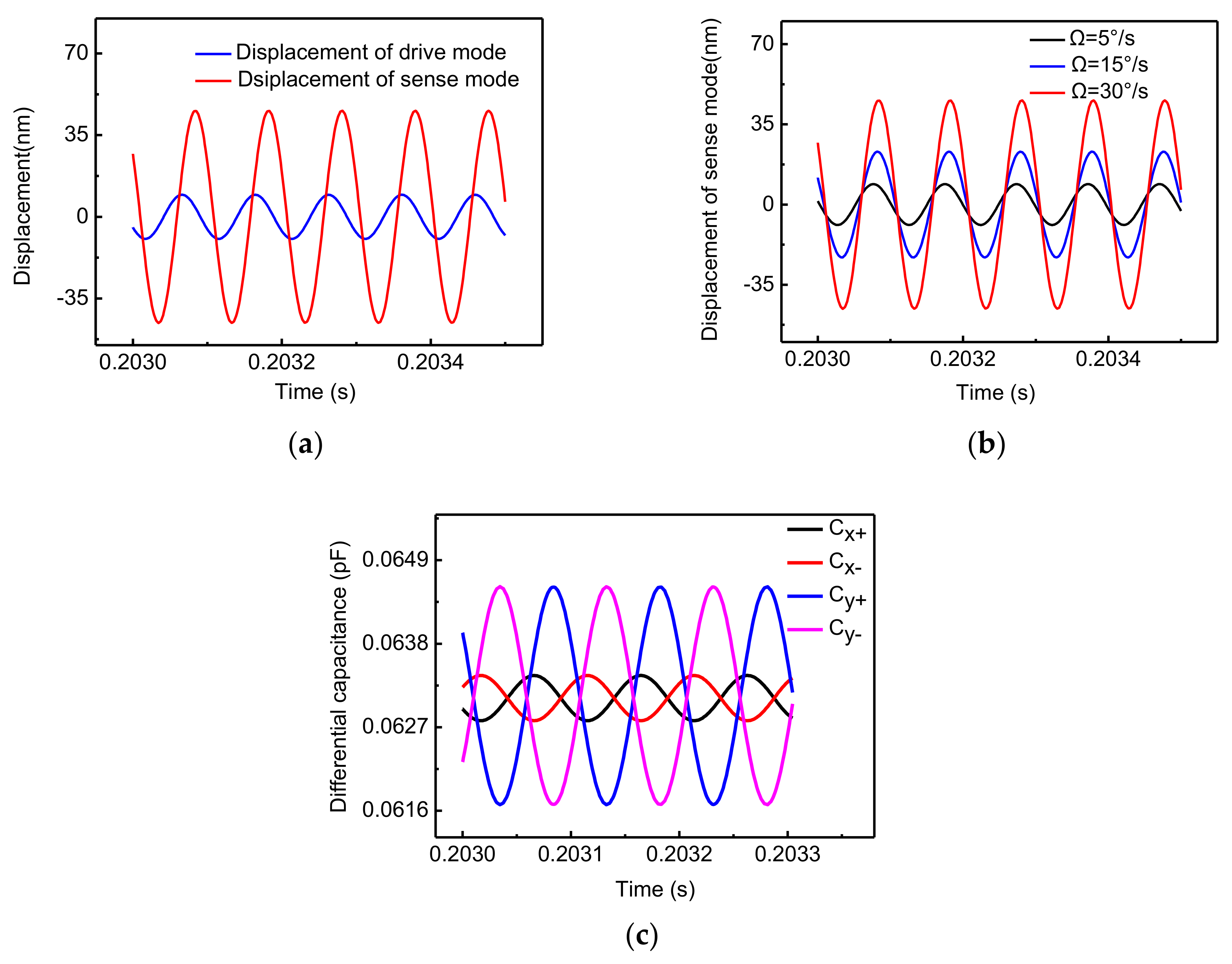
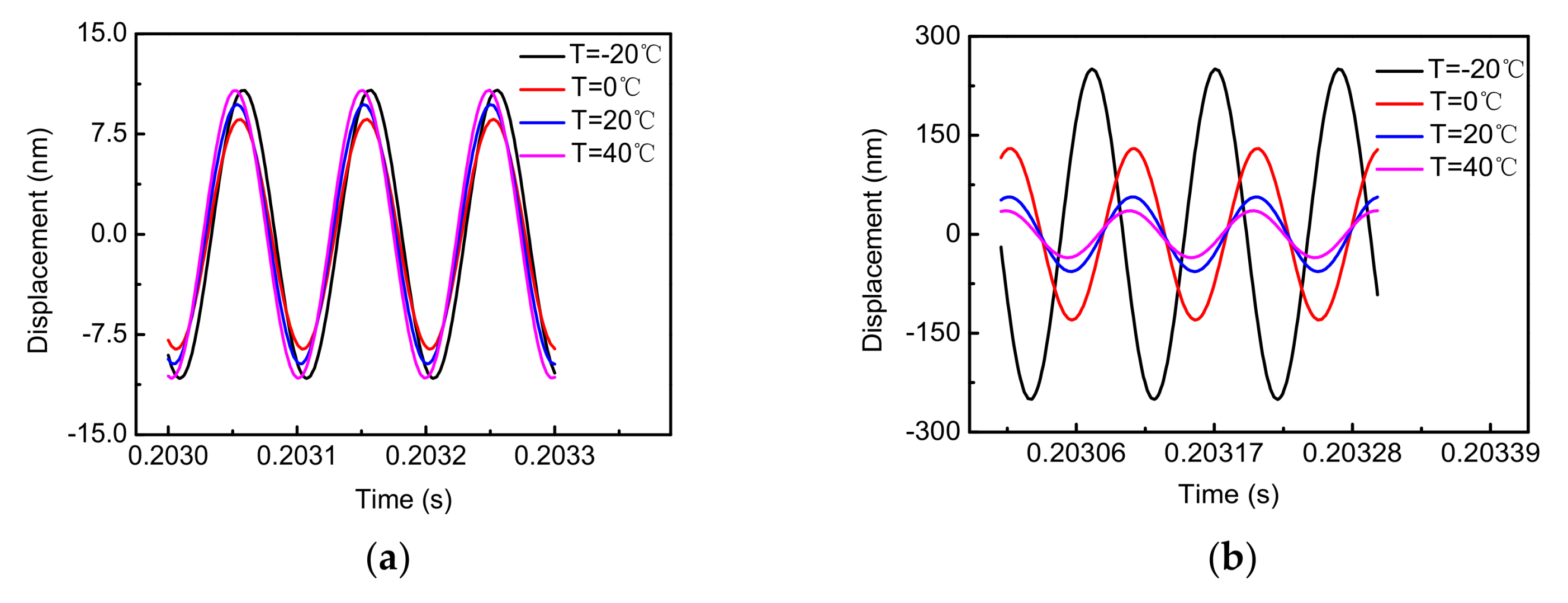

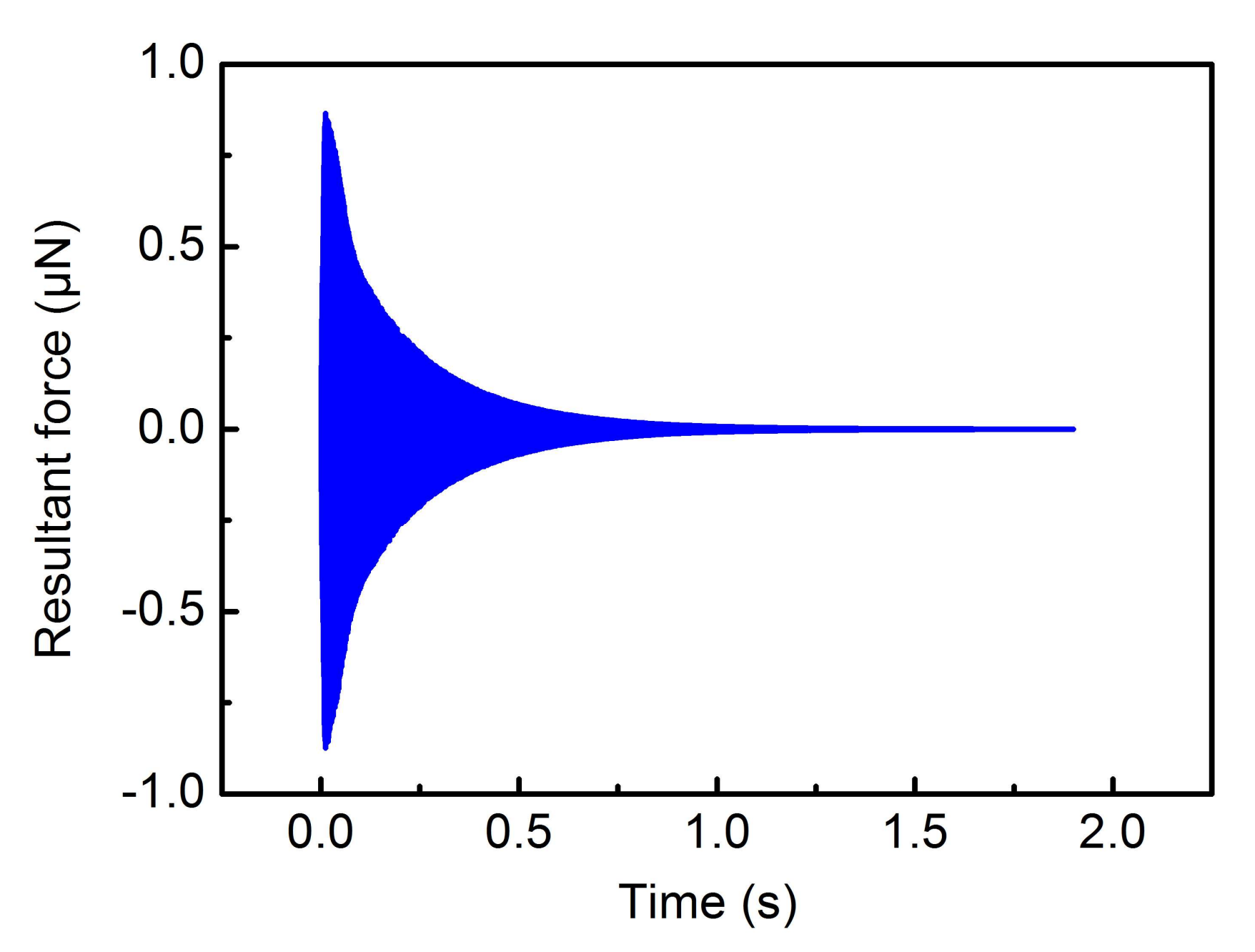




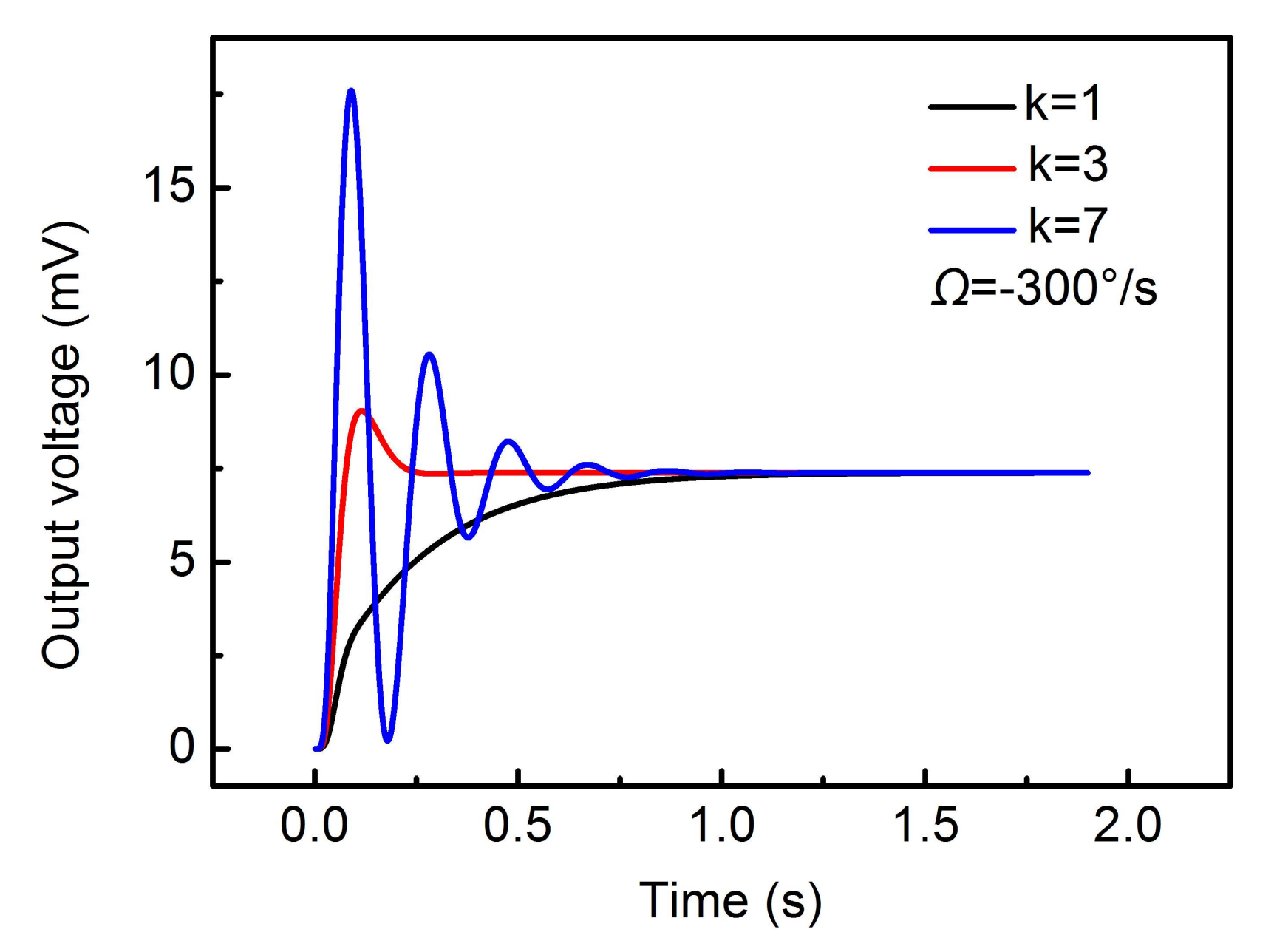
| Parameter | Value |
|---|---|
| fx | 10.157 kHz |
| fy | 10.257 kHz |
| fd | 10.157 kHz |
| U0 | 6 V |
| dx = dy | 2 μm |
| ε | 8.85 p |
| ax = ay | 14.256 × 10−9 m2 |
| mx | 12.3 μg |
| Qx | 150,000 |
| kyx | 5 N/m |
| my | 0.245 μg |
| Qy | 10,000 |
| A | 5 V |
© 2018 by the authors. Licensee MDPI, Basel, Switzerland. This article is an open access article distributed under the terms and conditions of the Creative Commons Attribution (CC BY) license (http://creativecommons.org/licenses/by/4.0/).
Share and Cite
Su, Y.; Tong, X.; Liu, N.; Han, G.; Si, C.; Ning, J.; Li, Z.; Yang, F. PSPICE Hybrid Modeling and Simulation of Capacitive Micro-Gyroscopes. Sensors 2018, 18, 1006. https://doi.org/10.3390/s18041006
Su Y, Tong X, Liu N, Han G, Si C, Ning J, Li Z, Yang F. PSPICE Hybrid Modeling and Simulation of Capacitive Micro-Gyroscopes. Sensors. 2018; 18(4):1006. https://doi.org/10.3390/s18041006
Chicago/Turabian StyleSu, Yan, Xin Tong, Nan Liu, Guowei Han, Chaowei Si, Jin Ning, Zhaofeng Li, and Fuhua Yang. 2018. "PSPICE Hybrid Modeling and Simulation of Capacitive Micro-Gyroscopes" Sensors 18, no. 4: 1006. https://doi.org/10.3390/s18041006





